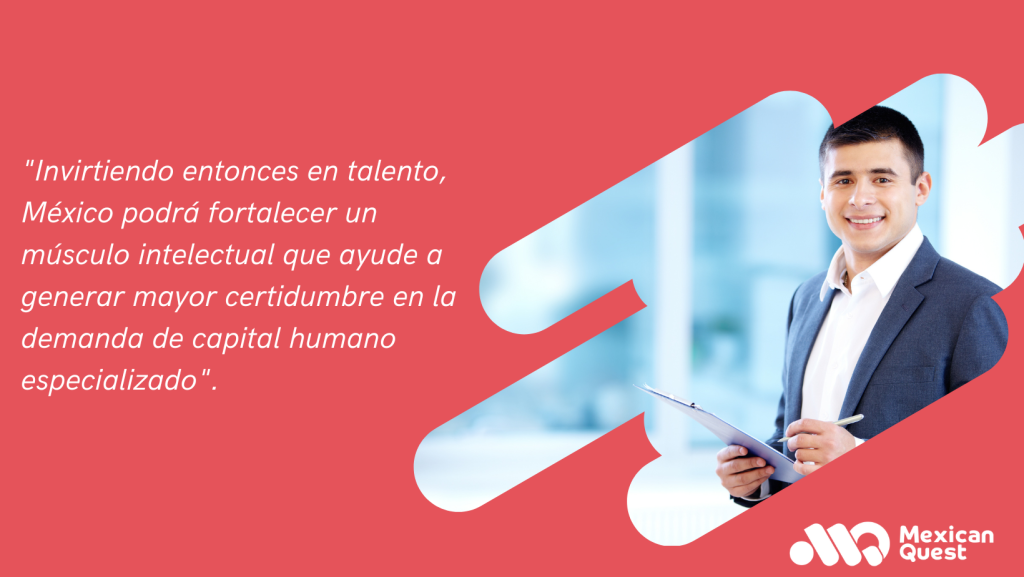
Over the last 50 years, Mexico has undergone profound transformations in its economic model. Moving from being an almost closed economy, deeply managed by the public sector, to one of the most attractive emerging economies globally. It has also become an actor that, over the years, has managed to read the geopolitical context in its favor with great dynamism and assertiveness.
For example, as a result of the trade war between China and the United States, Mexico has capitalized on the investment of companies attracted by the ‘nearshoring’ effect. Banorte estimates indicate that the effect of the relocation of companies in Mexico would generate an additional US$33.6 billion dollars in the value of non-oil exports per year, generating an estimated accumulated value of approximately US$168.1 billion dollars over five years. []
However, the arrival of multiple investments in Mexico highlights an enormous challenge to be taken into account: to have highly qualified human capital for a growing number of companies that demand specialized technological talent. As a result, it is necessary to generate strategies that concentrate efforts to redesign a talent creation and retention approach. In other words, to provide a medium and long-term response with human capital specialized in certain technological skills and competencies.
In view of the above, several studies consider it essential to consolidate a joint coordination between the private initiative and the public sector to promote STEM (Science, Technology, Engineering and Mathematics) education. Recent studies indicate that STEM human capital in Mexico has been growing at an accelerated pace with approximately 110,000 engineers graduating from various Mexican universities. [Although Mexico ranks as the second most digitally talented country in Latin America, with Mexico City in the top 5 markets with the most IT professionals, [] the shortage of digital talent is also on the rise.
Therefore, it is crucial that education authorities and business leaders continue to reinforce the certification of competencies with a win-win vision. In other words, strengthening and seeking to improve human capital in STEM competencies. The idea is not only to respond to the growing labor demand, but also to ensure that more people have access to sectors such as Data Analytics, Cybersecurity, Business Intelligence (BI), Artificial Intelligence (AI), Machine Learning, among others.
As a consequence, one of the first steps is to maintain continuous training and certification efforts. To this end, specialists in the recruitment sector indicate the need to create a co-innovation network that includes reviewing university curricula and establishing specialized training programs such as Bootcamps, as well as disseminating incentives and development programs to generate technological inclusion and support people in vulnerable situations.
By investing in talent, Mexico will be able to strengthen an intellectual muscle that will help generate greater certainty in the demand for specialized human capital by national and international companies.This, in turn, will contribute to attracting more investment, providing better paying jobs and helping to establish a knowledge ecosystem that will help position Mexico in Industry 4.0 as a regionally and globally competitive country.




